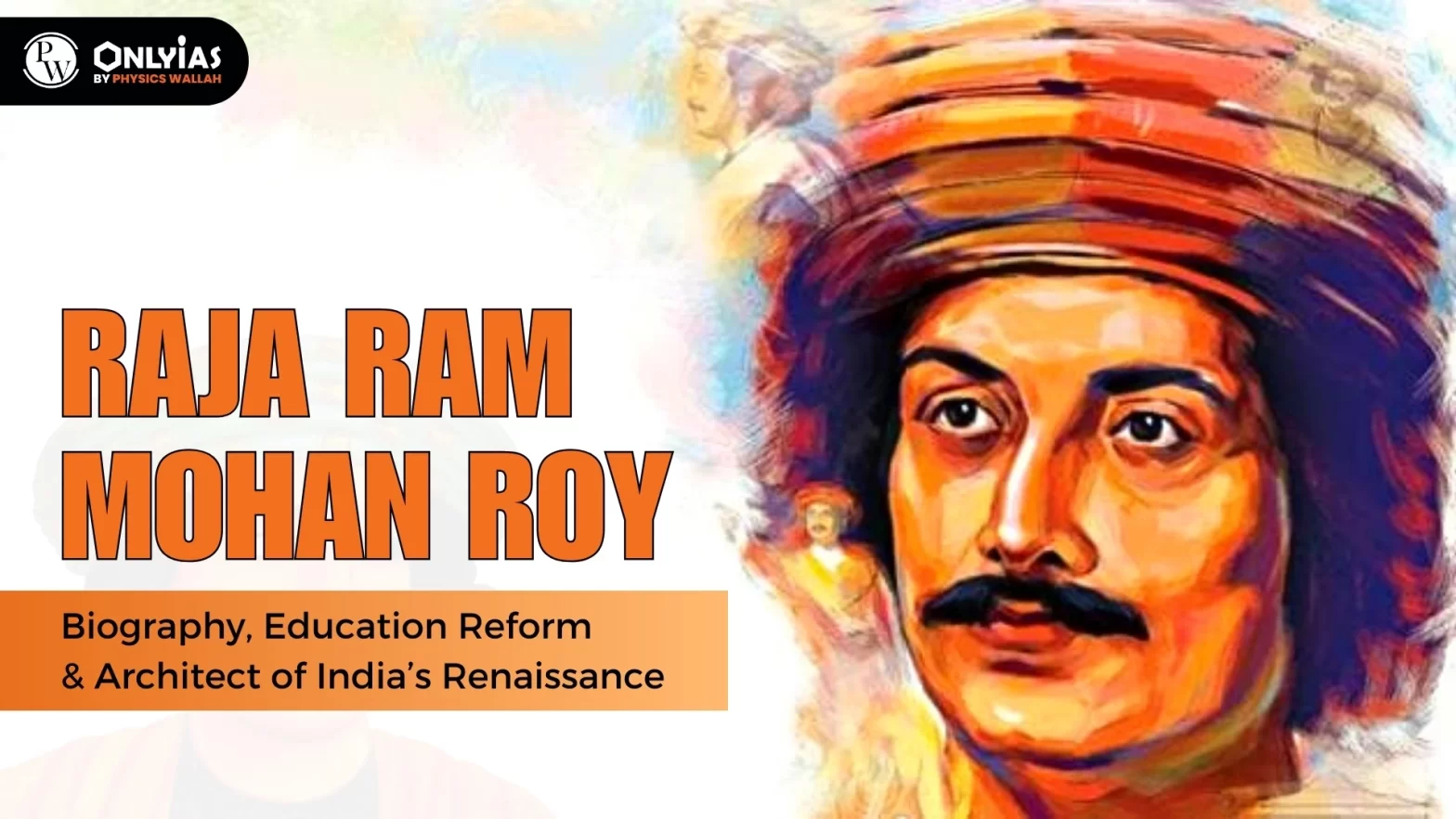Explore the life and contributions of Raja Ram Mohan Roy. Learn about his role in social reform and the Indian Renaissance

Raja Ram Mohan Roy was known as the father of Modern Indian Renaissance for his religious, social, and educational reforms. He confronted traditional Hindu customs and advocated for societal progress in India during the colonial period.
| Social Reforms |
|
| Religious Reforms |
|
| Economic & Political Reform |
|
| Educational Reform |
|
Raja Ram Mohan Roy was a wise person who knew how important the modern world was. He believed that humans should work together and be like brothers and sisters, not just focus on being independent. He wanted Indians to know their culture and work together with others to make the world better.
| Must Read | |
| NCERT Notes For UPSC | UPSC Daily Current Affairs |
| UPSC Blogs | UPSC Daily Editorials |
| Daily Current Affairs Quiz | Daily Main Answer Writing |
| UPSC Mains Previous Year Papers | UPSC Test Series 2024 |
Raja Ram Mohan Roy spearheaded religious, social, and educational reforms, challenging traditional Hindu customs during the colonial era.
He advocated for rationalism, opposed religious orthodoxies, supported social equality, and promoted women's rights in India.
He formed reform-oriented groups, opposed the caste system, advocated for women's rights, and campaigned against social issues like untouchability.
He exposed religious beliefs within Hinduism, established the Brahmo Samaj, and emphasized monotheism, reason, and human dignity.
He advocated Indianization of services, civil liberties, freedom of the press, tax reforms, and equality between Indians and Europeans.

<div class="new-fform">
</div>